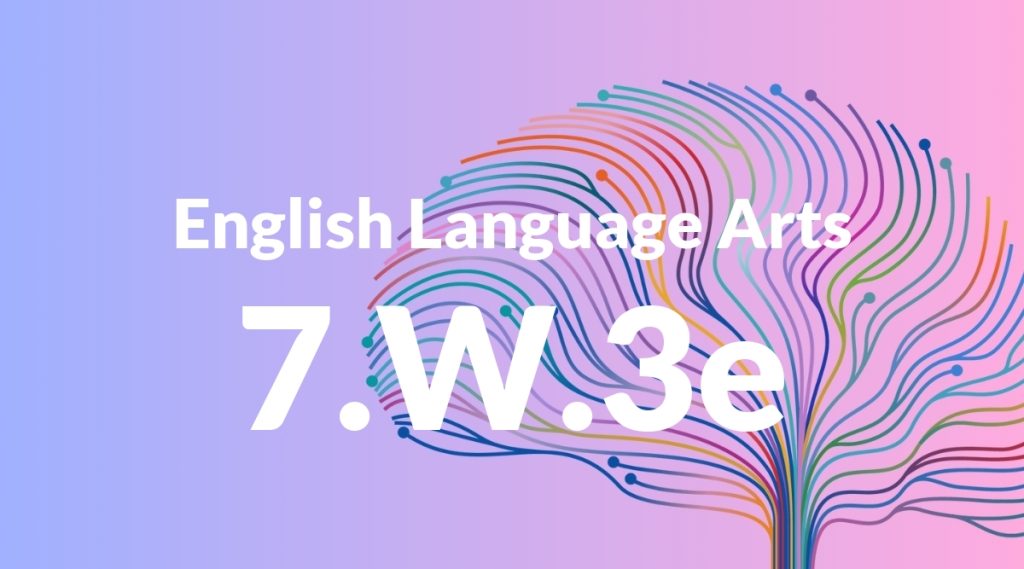Standard: 7.W.3e – Provide a conclusion that follows from and reflects on the narrated experiences or events.
Grade level: Grade 7
Subject: English Language Arts
Domain: Writing
Teacher Overview
This standard emphasizes the importance of crafting conclusions that not only summarize but also reflect on the narrated experiences or events. It is crucial for students to learn how to end their stories in a way that provides closure and insight, enhancing the reader’s understanding and engagement. Students should already know how to structure a narrative and understand the role of reflection in writing. They should have experience with writing personal narratives and basic story elements.
Mastering this standard will enable students to write more cohesive and impactful narratives. They will develop critical thinking and reflection skills that are applicable in various forms of writing and analysis.
Common Misconception 1
A common misconception is that a conclusion is merely a summary of the story. This is incorrect because a strong conclusion should also provide reflection and insight, offering a deeper understanding of the narrative.
Intervention 1
To address this misconception, provide students with examples of effective conclusions that offer reflection and insight. Engage them in activities where they rewrite weak conclusions to include reflective elements.
Common Misconception 2
Another misconception is that any ending will do, even if it doesn’t connect well with the story. This is incorrect because a disconnected ending can leave the reader confused and unsatisfied.
Intervention 2
Use examples of both strong and weak conclusions to illustrate the importance of a well-connected ending. Have students practice writing multiple conclusions for the same story and discuss which ones work best and why.
Prerequisite Knowledge
Students should understand basic narrative structure, including the beginning, middle, and end of a story. They should also be familiar with the concept of reflection and how it relates to personal experiences or events.
Subsequent Knowledge
After mastering this standard, students will be able to create more cohesive and impactful narratives. They will also develop skills in critical thinking and reflection, which can be applied to other forms of writing and analysis.
Instructional Activities
- Analyze the conclusions of well-known short stories and discuss their effectiveness.
- Write multiple endings for a given narrative and evaluate which one provides the best reflection and closure.
- Peer review each other’s narrative conclusions and provide feedback on their effectiveness.
- Create a storyboard that includes a well-thought-out conclusion reflecting on the events of the story.




